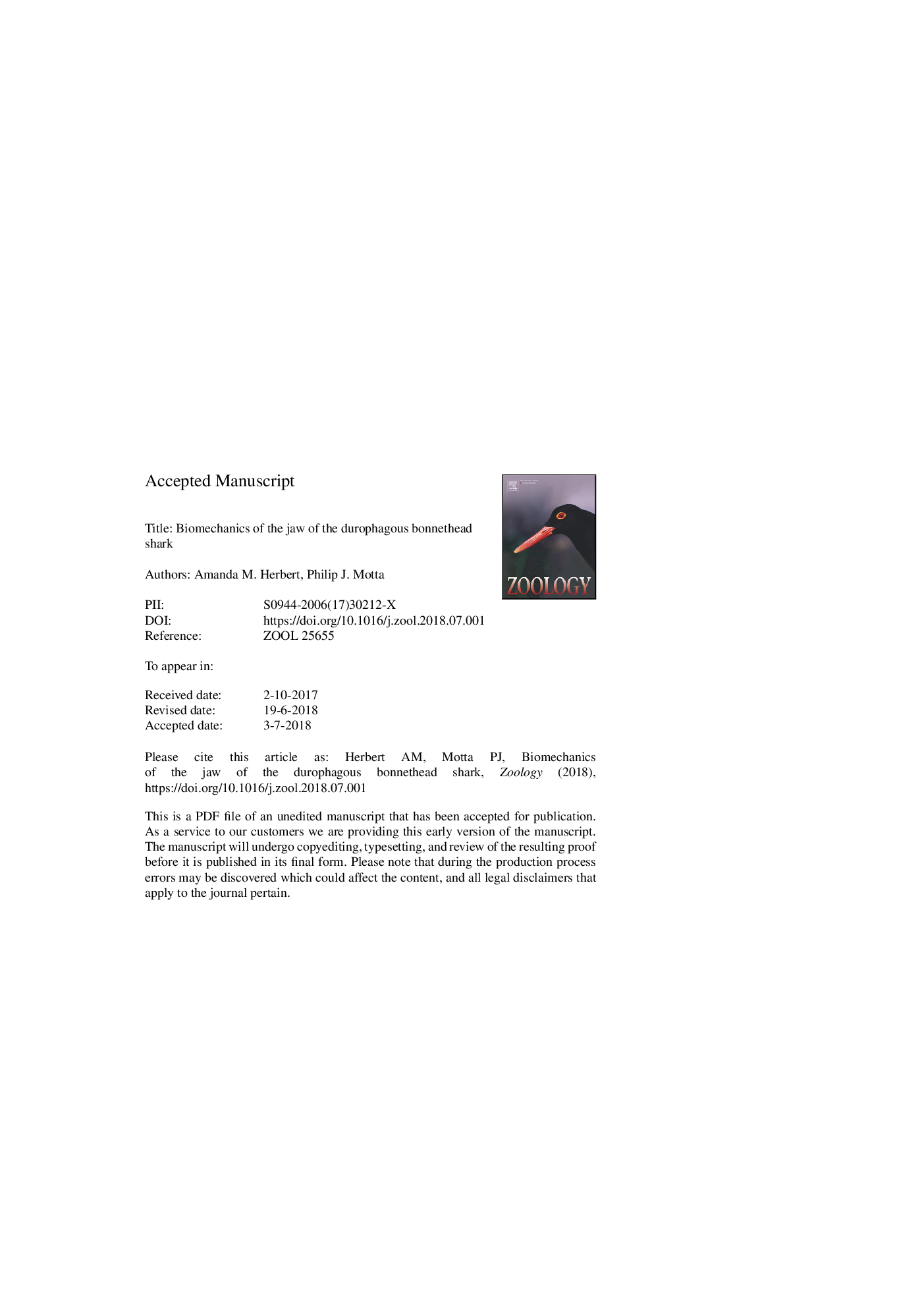| کد مقاله | کد نشریه | سال انتشار | مقاله انگلیسی | نسخه تمام متن |
|---|---|---|---|---|
| 8626934 | 1568629 | 2018 | 24 صفحه PDF | دانلود رایگان |
عنوان انگلیسی مقاله ISI
Biomechanics of the jaw of the durophagous bonnethead shark
ترجمه فارسی عنوان
بیومکانیک فک از کوسه گردوخاک دلفریب
دانلود مقاله + سفارش ترجمه
دانلود مقاله ISI انگلیسی
رایگان برای ایرانیان
موضوعات مرتبط
علوم زیستی و بیوفناوری
علوم کشاورزی و بیولوژیک
علوم دامی و جانورشناسی
چکیده انگلیسی
Durophagy in chondrichthyan fishes is thought to entail a set of morphological characteristics, such as hypertrophied adductor muscles, molariform teeth, and high bite forces. However, these characteristics are not common to all durophagous chondrichthyans. In some durophagous chondrichthyans, the jaws are better suited biomechanically to resist bending in the area where prey is processed. Resistance to bending is in part, quantified by second moment of area (I), which uses the neutral axis of an object to analyze the arrangement of material. This study investigated whether the lower jaw of the bonnethead shark, Sphyrna tiburo, is more resistant to bending under the crushing/molariform teeth compared to the grasping teeth. Using computerized tomography (CT) scanning, the jaws of ten bonnethead sharks were visualized, then digitally resliced at identical positions along the jaw for all specimens. I increased along the lower jaw from anterior to posterior as the teeth transform from grasping to crushing, with the largest absolute increase occurring about the transition from grasping to crushing teeth. When the lower jaw is compared to that of a rod of similar cross-sectional area, the shape exceeds that of a rod by 1.6 to 5.7 times, meaning the shape of the jaw is better suited to resist bending than if the same size jaw was shaped as a solid rod. These results suggest the lower jaw of S. tiburo is adapted to resist bending more under the molariform teeth where crushing occurs than at the anterior grasping teeth.
ناشر
Database: Elsevier - ScienceDirect (ساینس دایرکت)
Journal: Zoology - Volume 129, August 2018, Pages 54-58
Journal: Zoology - Volume 129, August 2018, Pages 54-58
نویسندگان
Amanda M. Herbert, Philip J. Motta,
